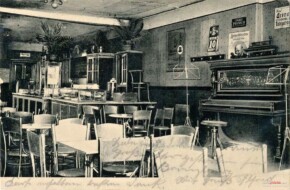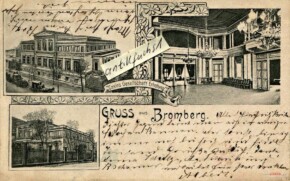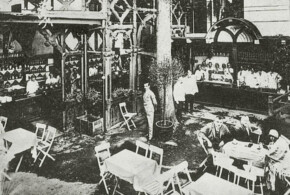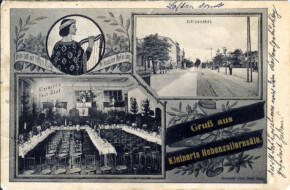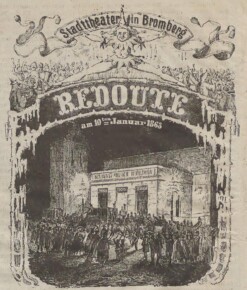Entertainment has always been an important aspect of life for leisure and pleasure. Contrary to appearances, in Bydgoszcz in the nineteenth and early twentieth century, the inhabitants had many opportunities for attractive leisure activities. The places that were undoubtedly the most popular were catering establishments of various classes, from cheap bars to exclusive restaurants. A highlight of many of them were daily concerts performed by hired musicians. There was often a piano available to the public, which customers could play to make social gatherings more enjoyable. Restaurants strived to have separate rooms where members of the numerous trade or hobby associations could meet regularly. For example, chess players played tournaments in a restaurant on Old Market Square.
The city theatre, which had its seat at Teatralny Square since 1824, was a particularly appreciated place of entertainment. Its last building from 1896, with its very modern furnishings and movable stage, made a lasting mark on the city’s history. Here, the audience was able to applaud many distinguished artists, both local and from Berlin, among others. In the time of Bromberg there was no philharmonic hall in the town, but the auditorium of the former Realschule at 18 Grodzka Street (today the seat of the Seminary) was used as one. However, particularly attractive places were établissements, i.e. garden-restaurant complexes with extensive infrastructure for entertainment and recreation. There were nearly 20 of them. The smallest covered an area of only a few hundred metres, others even 2.5 hectares, such as the complex at the headquarters of the Shooting Fraternity on Toruńska St. In addition to the catering part, they had facilities enabling the professional organisation of performances, concerts or dance parties. They featured gardens with facilities for outdoor recreation, such as band shells, bowling alleys and slides. These complexes had a rich functional programme and played an important culture-forming role. They hosted events, performances and shows with both local artists and performers from Germany, especially Berlin, Austria and Italy.
The invention of the cinematograph put theatres of luminous images, as cinemas were originally called, on the map of entertainment venues. There were five of these in Bydgoszcz before the First World War.
By recalling the former places of entertainment for the citizens of Bydgoszcz who lived in the times of Bromberg, we take a journey to places of social life, mostly non-existent and forgotten, which made the city resound with bustle and music.
Bogna Derkowska-Kostkowska, art historian, head of the Cultural Heritage Studio of the Kujawsko-Pomorskie Cultural Centre in Bydgoszcz.
She specializes in research on the history of architecture and urban planning in Bydgoszcz in the 19th and 1st half of the 20th century, as well as on the local construction environment, the history of industry in Bydgoszcz and street naming changes. In 2016, she published a book entitled “Bydgoszczanin i budowniczy. O Józefie Święcickim, architekturze i Bydgoszczy 1859-1913.” Moreover, she is the author of many monographic articles. She was a member of a local expert group consulting on the creation of the Bydgoszcz Industrial Heritage Route (TeH2O) within the European project SHIFT-X.
Online lecture, broadcast: from 10.02.2021 till 10.03.2021


